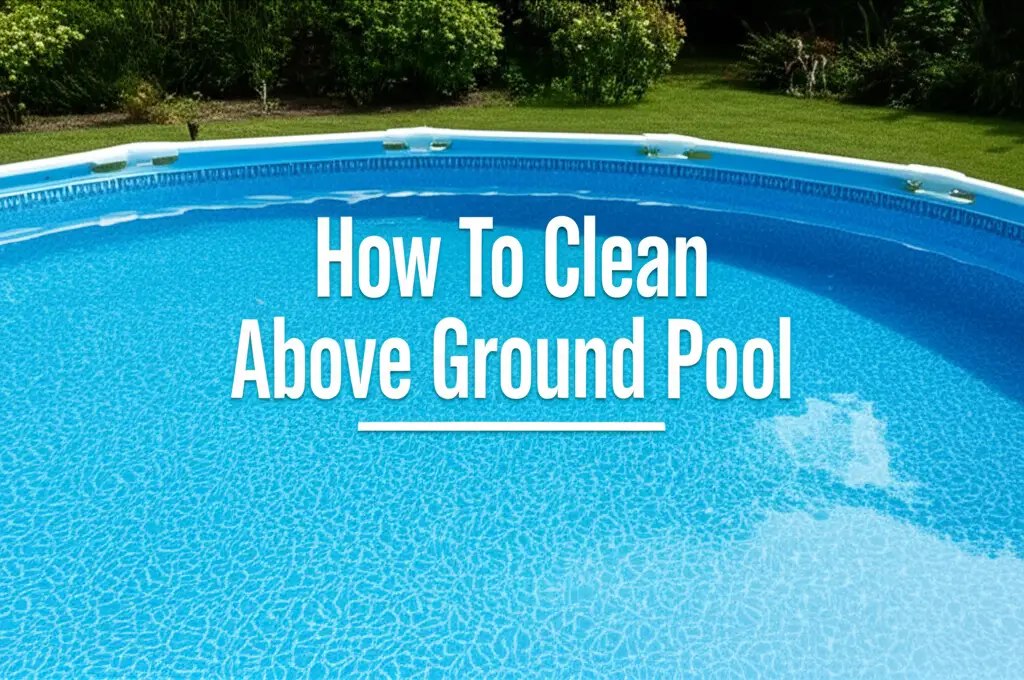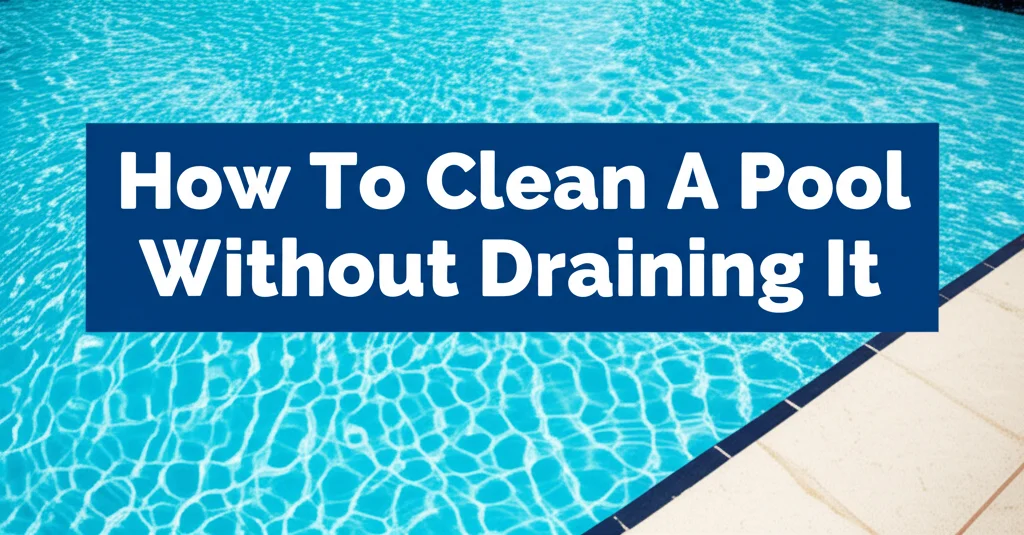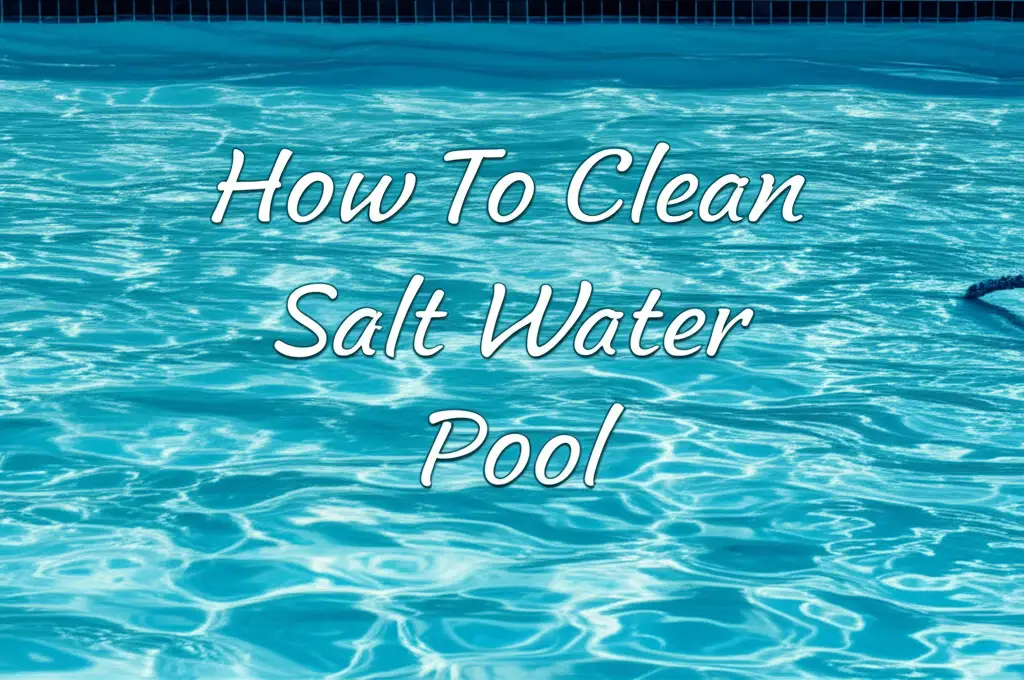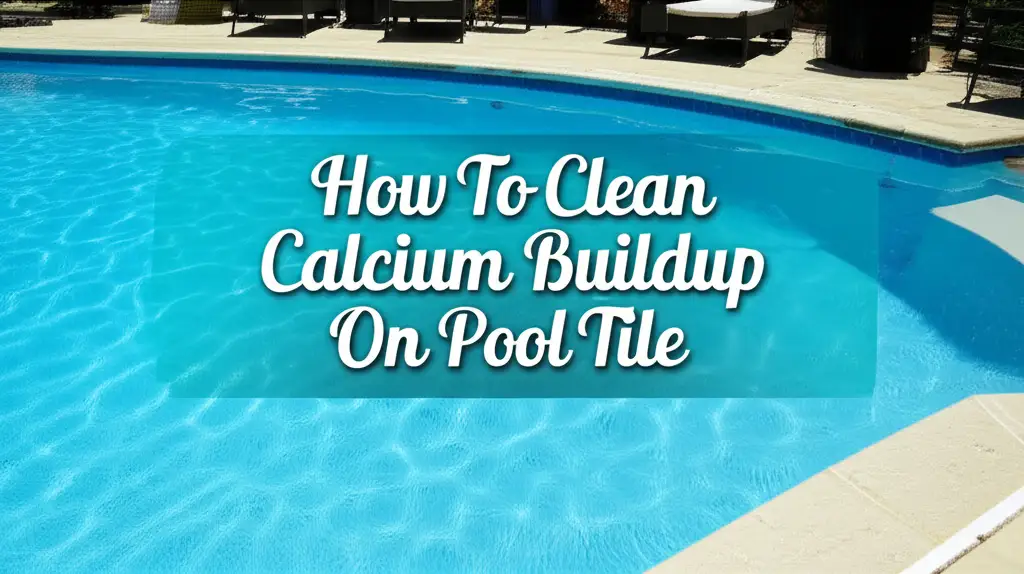· Pool Maintenance · 14 min read
How To Clean Hayward Salt Cell
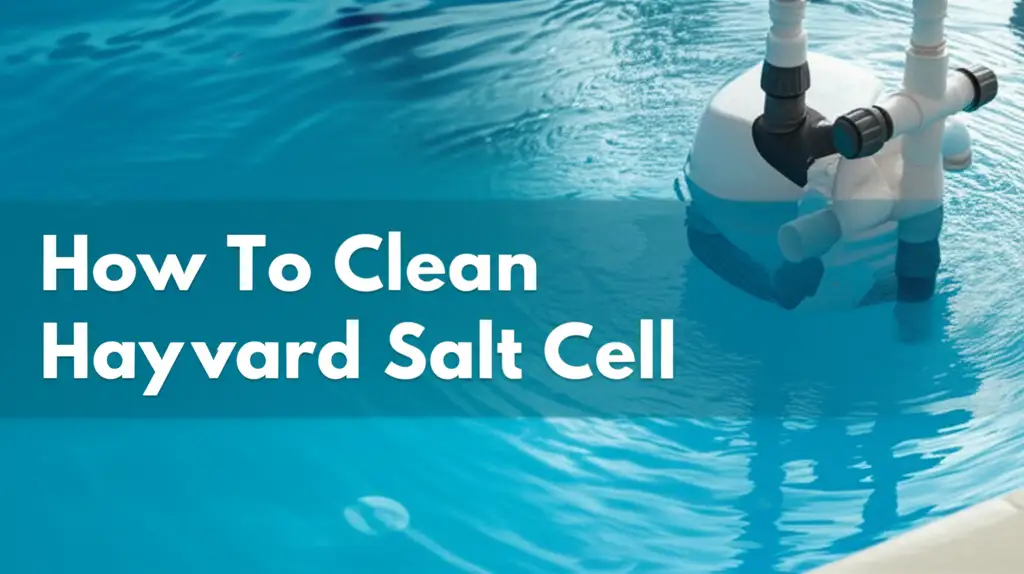
Optimize Your Pool: Clean Your Hayward Salt Cell Right
Have you noticed your pool water is not as clear as it used to be? Perhaps your Hayward salt cell system is showing a “check cell” light. A dirty salt cell is often the silent culprit behind many saltwater pool problems. Cleaning your Hayward salt cell is an essential part of pool care. This guide explains how to properly clean your salt cell. It helps you keep your pool sparkling and your equipment running well.
Maintaining a clean salt cell ensures your pool system makes enough chlorine. It also protects your valuable equipment from early failure. We will cover why cleaning is important and what signs to watch for. We will also give you a clear, step-by-step process. You will learn about safety measures and common mistakes to avoid. Let us get your Hayward salt cell, and your pool, back in top shape.
Takeaway:
- Regularly inspect your Hayward salt cell for scale buildup.
- Always disconnect power before removing the cell.
- Use a diluted muriatic acid solution for effective cleaning.
- Rinse the cell thoroughly with a strong stream of water after cleaning.
- Maintain proper pool chemistry to reduce future scale formation.
A clear and concise answer to the main query:
To clean your Hayward salt cell, first turn off pool power. Remove the cell. Inspect for scale. Soak the cell in a diluted muriatic acid solution (1 part acid to 4-5 parts water) for 15-20 minutes until bubbling stops. Rinse thoroughly with a garden hose. Reinstall the clean cell.
Keep Your Pool Sparkling: Why Cleaning Your Hayward Salt Cell Matters
Your Hayward salt cell plays a vital role in your saltwater pool. It changes ordinary salt into chlorine gas. This gas then dissolves into the water, keeping it clean and safe for swimming. Over time, minerals like calcium can build up on the cell’s titanium plates. This mineral buildup is called “scaling.” Scale acts like a barrier. It stops the cell from working correctly.
When scale covers the plates, the cell cannot produce chlorine efficiently. This means your pool might not get enough sanitization. Your water could become cloudy or even develop algae. A dirty cell also works harder, which shortens its lifespan. You might see higher electricity bills too. Regular cleaning prevents these problems. It ensures your cell works at its best. It keeps your pool water pristine.
Ignoring a dirty salt cell can lead to serious issues. Reduced chlorine output can make your pool unsafe. It can also lead to constant battles with algae. Furthermore, scale can permanently damage the delicate internal components of the cell. Replacing a Hayward salt cell is expensive. Proper cleaning protects your investment. It helps you enjoy your saltwater pool for many years.
We understand that pool maintenance can seem daunting. But cleaning your salt cell is a simple task that yields big rewards. It keeps your water clear and reduces chemical costs. It also ensures your salt system lasts as long as possible. A clean cell means a happy pool and a happy pool owner. This crucial step is part of overall healthy pool care. It contributes to clear, sanitized water and efficient system operation. Cleaning your salt water pool starts with its core components.
Spotting Trouble: Signs Your Hayward Salt Cell Needs Cleaning
Knowing when to clean your Hayward salt cell is important. Your cell will give you clear signals when it needs attention. One of the most obvious signs is visible calcium buildup on the titanium plates. If you remove your cell and see white, flaky, or crusty deposits, it is time for a clean. These deposits reduce the cell’s efficiency significantly.
Another common indicator is low chlorine levels in your pool. You might have normal salt levels, but your chlorine test shows low readings. This often means your cell is not converting salt into chlorine effectively. The scale prevents the proper electrical reaction. Your pool water might also start looking dull or cloudy. It could even show signs of green algae growth. These are all signs of insufficient chlorine.
Your Hayward salt system itself might alert you. Many models have diagnostic lights or error codes. A “check cell” light or a similar indicator often means the cell needs cleaning or inspection. Always refer to your system’s manual for specific error code meanings. If your system runs for longer periods than usual to achieve chlorine, this also points to a dirty cell. It tries harder to make chlorine, using more energy.
Sometimes, the flow switch built into your cell housing can get obstructed. Calcium or debris can block it, causing the system to think water is not flowing. This leads to the cell shutting down or not producing chlorine. Regular visual inspection of your salt cell helps you catch these issues early. It prevents minor problems from becoming major ones. Catching these signs quickly helps your pool stay clean and clear.
Gear Up: Essential Tools and Safety for Salt Cell Cleaning
Before you begin cleaning your Hayward salt cell, gather all the necessary tools. This ensures a smooth and safe process. You will need a large bucket or a specialized cleaning stand for the cell. A garden hose with good water pressure is also essential for rinsing. For safety, you must have rubber gloves and eye protection. Chemical-resistant gloves are best.
The main cleaning agent you will use is muriatic acid. This is a strong acid and must be handled with extreme care. Always dilute it properly. You will also need clean water for dilution and rinsing. A plastic brush, specifically designed for salt cells or a soft bristled brush, can help remove loose deposits. Never use metal brushes or tools on the cell plates. They can damage the delicate coating.
Safety is paramount when working with muriatic acid. Always wear your safety glasses and chemical-resistant gloves. Also, wear old clothes that you do not mind getting damaged. Work in a well-ventilated area, preferably outdoors. Keep children and pets away from the cleaning area. Have a source of clean water nearby in case of skin contact.
Before handling the acid, read the product’s safety data sheet. Understand its hazards and first aid procedures. Pour acid slowly into water, never water into acid. This minimizes splashing and dangerous reactions. Having all your tools ready and prioritizing safety makes the cleaning process effective and secure. Always be prepared.
Hands-On Approach: Manual Cleaning Your Hayward Salt Cell
You can often perform a light manual cleaning of your Hayward salt cell. This method is effective for minor scale buildup or debris. It helps you keep the cell working efficiently between deeper acid cleanings. First, turn off all power to your pool pump and the salt chlorine generator at the circuit breaker. This step is crucial for your safety.
Next, disconnect the salt cell from the plumbing. Most Hayward cells have union nuts that allow for easy removal. Twist these nuts counter-clockwise to loosen them. Be ready for a small amount of water to spill out. Carefully pull the cell out from the plumbing. Inspect the inside of the cell. Look for any visible debris like leaves, hair, or small stones.
If you see only loose debris, you can gently rinse it away with a garden hose. Point the hose into the cell and allow water to flow through. This can dislodge most loose material. For very light calcium deposits, a soft plastic brush can be used. Gently brush the plates to remove any soft scale. Be very careful not to scratch or damage the delicate coating on the plates.
After rinsing and brushing, inspect the cell again. If you still see significant white, crusty deposits, a deeper clean with muriatic acid is necessary. Manual cleaning is a great first step or a quick maintenance task. It is a good idea to perform this manual check every few months. This prevents major scale from accumulating. Removing sediment out of a well has similarities to clearing debris from your salt cell, both benefit from careful removal.
Tackle Tough Deposits: Muriatic Acid for Your Salt Cell
For stubborn calcium buildup on your Hayward salt cell, muriatic acid is the most effective solution. This method requires careful handling due to the acid’s strength. Always follow safety guidelines outlined earlier. First, prepare your cleaning solution. In a clean plastic bucket, add 4 to 5 parts water. Then, slowly and carefully add 1 part muriatic acid to the water. Always add acid to water, never the other way around. This prevents dangerous splattering.
Next, cap one end of your salt cell or use a cleaning stand designed for this purpose. This creates a sealed chamber within the cell. Slowly pour the diluted acid solution into the cell until it fills the plate area. You will immediately see bubbles forming. This indicates the acid is dissolving the calcium scale. Do not submerge the entire cell, only the titanium plates. Some cells have electronics that should not get wet.
Let the cell soak for 15 to 20 minutes. The bubbling action should gradually slow down or stop completely. If the bubbling stops and you still see scale, the solution might be exhausted. You might need to prepare a fresh batch and repeat the soak. Avoid over-soaking the cell. Leaving it in acid for too long can damage the plates’ coating. Check the cell periodically during the soak.
Once the bubbling stops and the plates look clean, carefully pour out the acid solution. Dispose of it properly according to local regulations. Then, thoroughly rinse the inside of the cell with a strong stream of fresh water from a garden hose. Ensure all acid residue is gone. This final rinse is critical before reinstalling the cell. It ensures no harmful chemicals enter your pool. Just as you might need to clean a CAD cell on an oil burner for optimal performance, your salt cell benefits greatly from this specific cleaning process.
Extend Life: Preventing Hayward Salt Cell Buildup
Preventing calcium buildup is just as important as cleaning it. Proactive measures extend your Hayward salt cell’s lifespan and reduce cleaning frequency. The most crucial step is maintaining proper pool water chemistry. Regularly test your pool’s calcium hardness levels. High calcium levels (over 400 ppm) greatly increase the risk of scale formation on the cell plates. Keep calcium hardness between 200 and 400 ppm.
Another key factor is pH balance. If your pool water’s pH is too high (above 7.8), calcium is more likely to precipitate out of solution and form scale. Maintain your pH level between 7.4 and 7.6. Use pH reducers like muriatic acid to lower high pH. Proper alkalinity also helps buffer pH swings. Keep your total alkalinity between 80 and 120 ppm.
Ensuring correct salt levels is also vital. Check your pool’s salt concentration regularly. Follow your Hayward system’s recommended range, usually between 2800 and 3400 ppm. Too low salt can reduce cell efficiency. Too high salt can contribute to scaling and stress the cell. Using a good quality salt that dissolves completely helps.
Running your salt system at the recommended output level for your pool size is also important. Avoid running the cell at maximum output constantly, as this can accelerate scale formation. Consider using a scale preventative chemical in your pool water. These products help keep minerals suspended in the water, preventing them from plating out on surfaces like the salt cell. Regular backwashing of your filter helps remove mineral-laden water. These preventive steps keep your salt cell cleaner for longer. They ensure your investment continues to pay off.
Pitfalls to Avoid: Common Mistakes in Salt Cell Cleaning
Cleaning your Hayward salt cell properly prevents costly damage. However, certain mistakes can harm your cell or compromise your safety. Avoid using metal tools to scrape or clean the cell plates. Metal objects, like screwdrivers or wire brushes, can permanently scratch the delicate ruthenium or iridium coating on the titanium plates. This coating is essential for chlorine production. Always use plastic tools or soft brushes.
Another common mistake is over-soaking the cell in acid. While acid effectively removes scale, leaving the cell submerged for too long can corrode the plate coating. Limit soaking time to 15-20 minutes, or until bubbling stops. If the cell still has scale, change the acid solution and repeat with a fresh, diluted batch. Do not guess the dilution ratio. Always follow the 1 part acid to 4-5 parts water rule. Pouring undiluted acid into the cell can cause severe damage.
Failing to rinse the cell thoroughly after cleaning is also a major error. Any residual acid can continue to react with the cell components or enter your pool water. This can lead to equipment corrosion or chemical imbalances in your pool. Use a strong stream of fresh water to flush the cell completely. Ensure no more acid smell remains.
Ignoring safety precautions is perhaps the most dangerous mistake. Working with muriatic acid without proper eye protection and gloves can lead to chemical burns or eye damage. Always work in a well-ventilated area. Never mix muriatic acid with other chemicals. Putting a partially cleaned or still dirty cell back into service does not solve the problem. It forces the cell to work harder. This will shorten its lifespan. Always ensure the cell is visibly clean before reinstallation. Learning from these common errors helps you protect your equipment and yourself.
FAQ Section
How often should I clean my Hayward salt cell?
You should inspect your Hayward salt cell every three to four months, or whenever your system indicates a “check cell” warning. The actual cleaning frequency depends on your pool’s calcium hardness, pH levels, and how often you use your pool. In areas with hard water, you might need to clean it more often, perhaps every two months. Regular inspection helps you decide.
Can I use vinegar to clean my Hayward salt cell?
For very light calcium buildup, a strong vinegar solution (acetic acid) can sometimes work. However, muriatic acid is much more effective and faster for the typical scale found on Hayward salt cells. Vinegar is a weaker acid and may not fully dissolve stubborn deposits. It is generally not recommended for a thorough salt cell cleaning.
What happens if I don’t clean my salt cell?
If you do not clean your salt cell, calcium scale will build up on its plates. This scale reduces the cell’s ability to produce chlorine. Your pool water may become cloudy, green, or unsanitary. The cell will also work harder, using more energy and shortening its overall lifespan. Ultimately, a dirty cell can lead to costly replacement.
How do I know my salt cell is dirty?
Common signs include visible white, crusty deposits on the cell plates when you inspect it. Your pool’s chlorine levels might be consistently low despite correct salt levels. Your Hayward salt system may display a “check cell” light or an error code. The pool water might appear cloudy or start developing algae.
Is cleaning a salt cell dangerous?
Cleaning a salt cell can be dangerous if you do not follow safety precautions, primarily due to the use of muriatic acid. Muriatic acid is corrosive. It can cause skin burns and eye damage. Always wear safety glasses and chemical-resistant gloves. Work in a well-ventilated area. Always add acid to water, slowly and carefully.
Conclusion
Cleaning your Hayward salt cell is an important part of maintaining a healthy and sparkling saltwater pool. We have explored why this task is crucial, from preventing cloudy water to extending the life of your expensive equipment. We also learned how to spot the signs of a dirty cell. You now have a clear, step-by-step guide to confidently clean your Hayward salt cell using muriatic acid. Remember, safety always comes first when handling chemicals.
By following these guidelines, you ensure your salt system runs efficiently. You prevent premature wear and enjoy clear, clean pool water. Regular maintenance, including consistent water chemistry tests, reduces the need for frequent deep cleanings. Do not let scale build-up diminish your pool experience. Take the proactive steps outlined here. Your pool, and your wallet, will thank you for it. Make cleaning your Hayward salt cell a routine part of your pool care schedule.
- Hayward salt cell
- salt cell cleaning
- pool maintenance
- saltwater pool
- chlorine generator
- pool care

